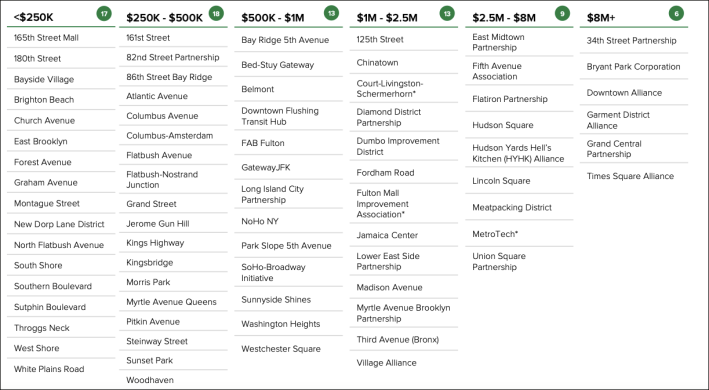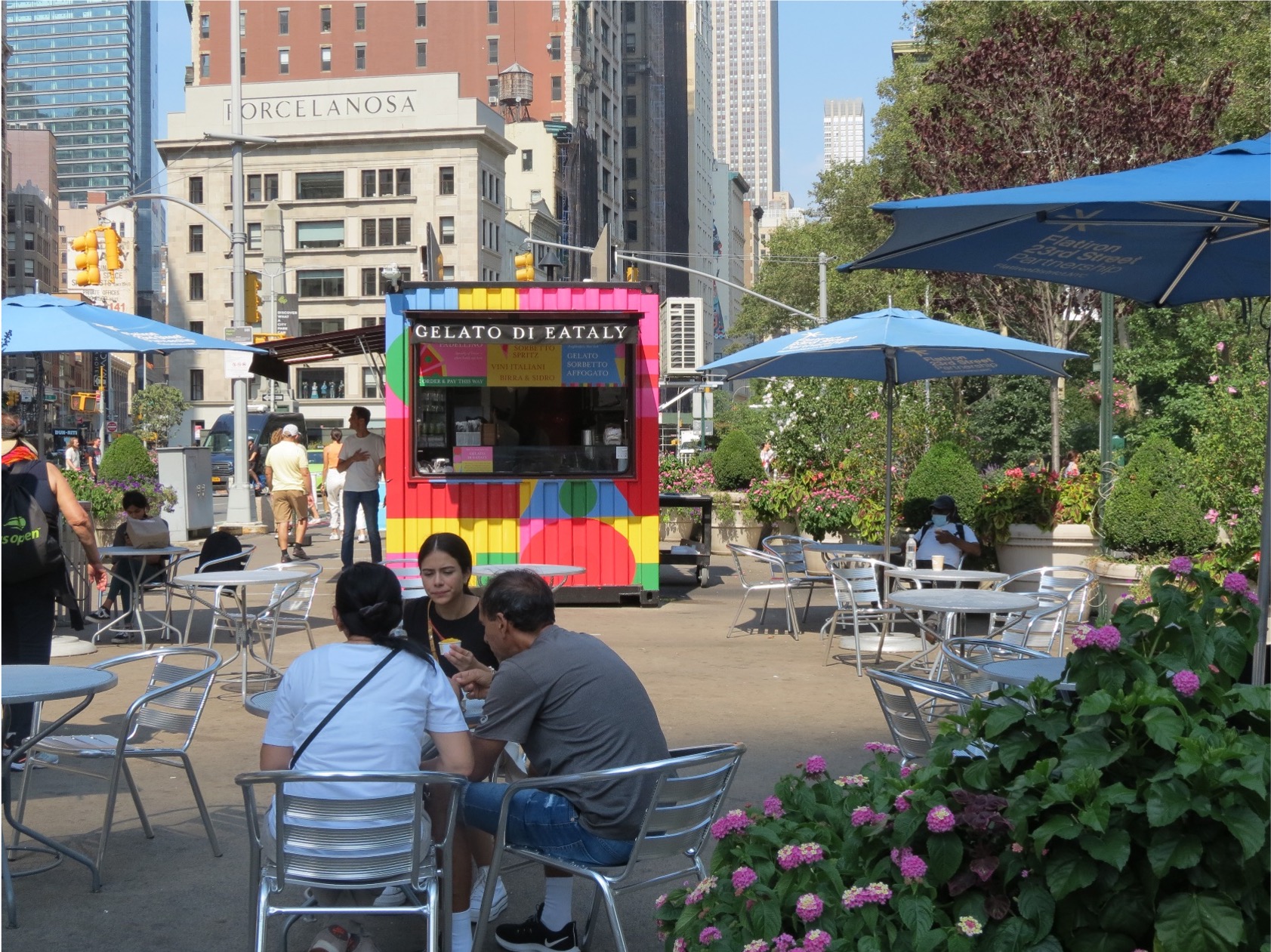Even as the city's businesses reeled during the pandemic, the city's business improvement districts provided nearly the same level of sanitation and other supplemental services — which may be why the Adams administration is hoping BIDs will be the engine to pull the city out of the doldrums.
Total spending by all 76 BIDs dropped just $7 million in Fiscal Year 2021 compared to the previous 12-month July-June period, even as total sales at BID retailers dropped by more than half, from $10 billion to $4.9 billion, sales tax revenue fell from nearly $500 billion to $257 billion, the total assessed value of BID properties sank from $117 billion to $95.1 billion and the total revenues of BID businesses fell from $182.1 million to $174.9 million.
Even so, the BIDs nearly maintained their outlays in FY2021, spending $162.7 million, or better than 95 percent, of the $170.5 million that they spent in FY 2020 on services such as sanitation, security and events — supplemental to the city's strained service delivery over the same period.
Those are the numbers from the city Department of Small Business Services' annual "BID Report" for FY 2021, at which Streetsblog got an exclusive peek. The BIDs continued delivery of so much in additional services explain why Mayor Adams is prepared to lean on them more.
“New York City is on the road to rapid economic recovery due in part to our important partnership with our business improvement districts,” Small Business Services Commissioner Kevin Kim said in a statement. “From new initiatives to clean up our sidewalks, to the transformation of streets into vibrant public spaces, BIDs in all five boroughs play a critical role in our economic comeback.”
The problem with relying on the BIDs to perform such vital functions as keeping streets cleans and plazas programmed — not to mention to power the city out of the crisis — is one of equity: Most areas of the city — especially the neediest ones, such as Black and brown residential areas of the outer boroughs — do not have a BID, putting them at a distinct disadvantage to wealthy, whiter areas. As such, some advocates believe that the city should create a new taxpayer-funded investment in public space management, which comprises pieces of virtually all city agencies, yet is overseen by not one of them.
"Within their boundaries, BIDs do a great job with their resources to provide clean, safe, and attractive streets and sidewalks," said Jackson Chabot, director of public space advocacy for Open Plans (the parent company of Streetsblog). "But BIDs cover just 2 percent of the city and have substantial budget discrepancies between the largest and smallest BIDs. Therefore, we call for an Office of Public Space Management to ensure every neighborhood in New York City gets the clean, safe, and joyful public space they deserve."
For now, that will require the help of BIDs.

Formed in the wake of the fiscal crisis of the 1970s and its attenuation of municipal services, the BIDs have sought to take up the slack from ailing city agencies. In the last 40 or so years, they've taken on a bevy of functions that used to be performed by government. Not only do they clean up commercial strips and sponsor street fairs. As Streetsblog has reported, the BIDs, rather than the city, have taken the lead on pedestrianization and "placemaking" — making great places for people out of formally drab commercial districts. Often, these efforts involve top design firms and elaborate "vision plans."
BIDs spearheaded pedestrianization efforts in the Financial District (2003), Flatiron and NoMad (2008 and 2021), Herald Square (2009), and Times Square (2012-16) — and recently, these efforts have accelerated, with the BIDs of the Meatpacking District, SoHo, Hudson Square, Union Square, and the Downtown Brooklyn all announcing far-reaching plans to create pedestrian-friendly areas.
Collectively, the 76 BIDS serve nearly 300 miles of commercial corridors and get their cash from membership fees from businesses and landlords, cover just 2 percent of the city. Yet they comprise a veritable shadow government which, according to the report, performs such crucial functions as:
- Employing 729 private sanitation workers to collect four million trash bags
- Removing almost half a million graffiti tags from public spaces
- Managing 34 open streets over 77 blocks in order to support local businesses and restaurants
- Holding more than 2,000 public events that entertained almost 50 million New Yorkers and tourists
- Maintaining 177 public spaces, where last year they ran 162 art installations (often the most innovative public art in the city).
But their distribution through the city is not equitable. The six BIDs with the biggest budgets are all in Manhattan. And the 15 BIDs with annual budgets over $2.5 million are all in the richest parts of the city. But the Adams administration has promised to strengthen "commercial corridors across the five boroughs by investing in small Business Improvement Districts [and] merchant associations."
To read the full Department of Small Business Services BID report, click here.






